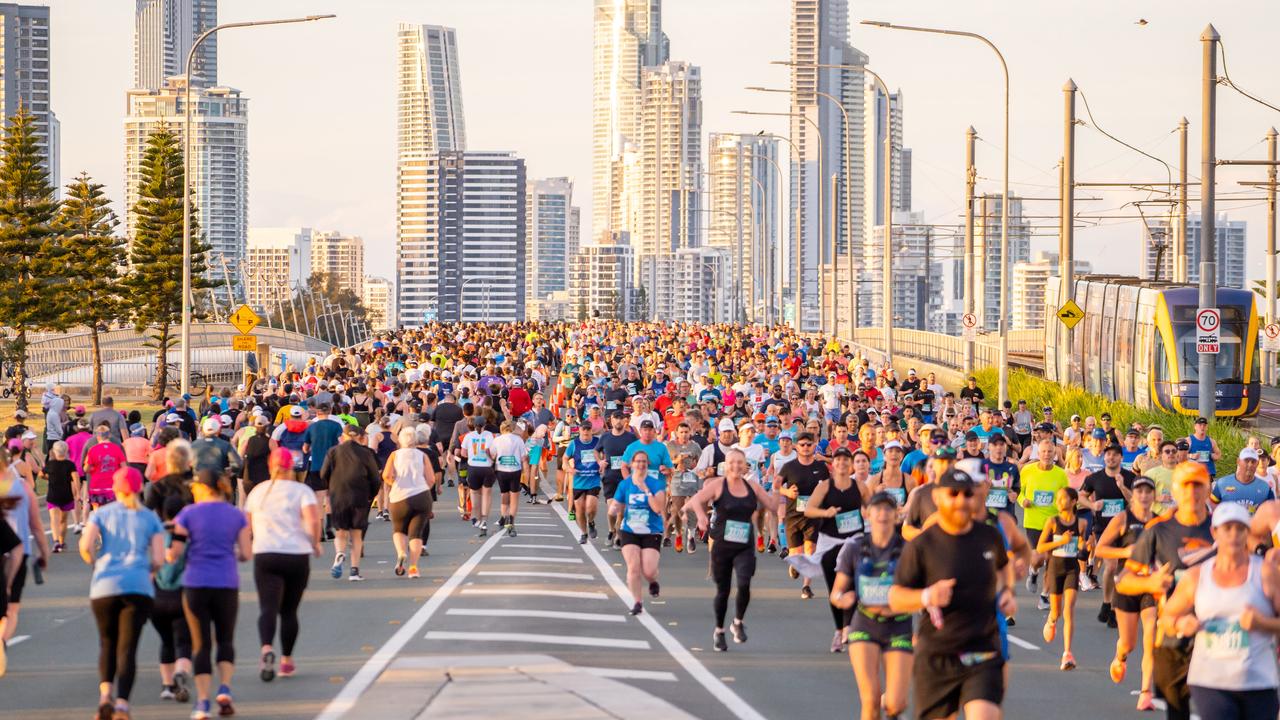Gold Coast Marathon: Most memorable and controversial moment revealed
The Gold Coast Marathon is one of the city’s biggest events of the year, bringing in tens of millions of dollars for the city’s economy. This is the inside story of its biggest and most controversial moments.
Gold Coast Marathon
Don't miss out on the headlines from Gold Coast Marathon. Followed categories will be added to My News.
The Gold Coast Marathon is one of the city’s biggest events of the year, bringing in tens of millions of dollars for the city’s economy.
But it had much more humble beginnings.
It began not as major event but as a community celebration to encourage locals to be healthy.
This weekend’s event marks 44 years since the inaugural marathon was held on September 2, 1979.
It was founded by the members of the Surfers Paradise Central Rotary Club as part of a health awareness campaign.

While today’s marathon weekend is based at the Southport Broadwater Parklands, the original 42.2km course began and finished at Bundall’s Evandale precinct, which had been developed into the city’s civic centre a handful of years earlier.
The 1980 event was not just the first of the decade but also showed the strength of the Gold Coast Marathon, which had such a large surge in participation that it immediately became Australia’s second-largest marathon.
That year the men’s race was won by British-born Andrew Lloyd who was at the beginning of his career as a distance runner.

A decade later he went on to win gold for Australia at the 1990 Auckland Commonwealth Games in the 5000m event.
With the success of the first two marathons, organisers were keenly aware they needed to boost its international profile if it was to gain global prestige.
Taking advantage of the Gold Coast’s iconic beachfront, the marathon’s course was moved to Surfers Paradise, with runners then tracking along the coastline.
This vision of having picture-perfect backdrops for elite athletes proved to have long-lasting implications, with much of this route used in the 2018 Commonwealth Games and beamed around the world.
Through the remainder of the 1980s the event’s start and finish moved several times, from Surfers Paradise Surf Life Saving Club to Kurrawa Park in Broadbeach and finally, in 1991, Southport.
Brisbane runner Pat Carroll won the 1986 and 1988 marathons as well as the 1987 half-marathon.
There was significant controversy surrounding the 1990 marathon. Yasushi Hashimoto crossed the finish line first and was initially declared the winner before being disqualified.
Judges ruled he had breached the rules by using a cyclist as a pacesetter for the final 5km of the race. The win was instead awarded to Allan Carman.
Throughout the 1990s the marathon continued to grow in size drawing more than 10,000 competitors annually.

In 1996, it saw couple Amanda Dann and Lee Pratt tie the knot at the start line.
It briefly relocated to Runaway Bay in 1999 but returned to Southport three years later.
Despite this success, the event fell into debt by the year 2000, as longtime name sponsor JAL withdrew.
Then-Queensland Premier Peter Beattie threw the event a lifeline, with his government allowing Gold Coast Events Management, a subsidiary of the Government’s Queensland Events Corporation, to take over.

The 2000s proved to be a strong decade, with the number of runners reaching 20,000 by 2008.
That year, New Zealand’s Shireen Crumpton became the first woman in more than 20 years to win a second marathon after taking out the title previously in 2003.
The 2009 marathon became famous for featuring the closest finish in its history for the women’s race.
Lauren Shelley edged out Queenslander Roxie Schmidt in a sprint finish over the final 100m to win in 2:42.22.





